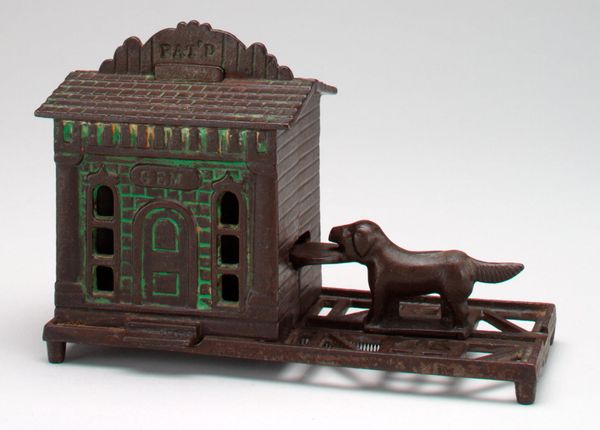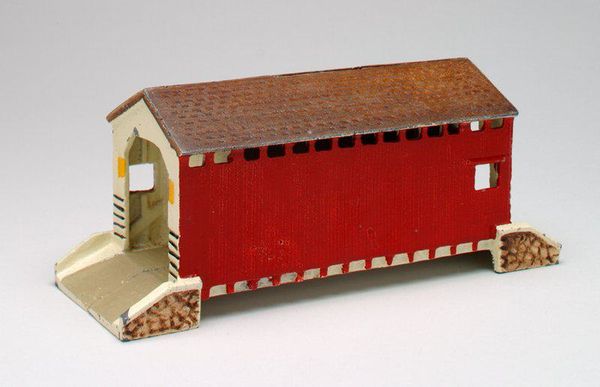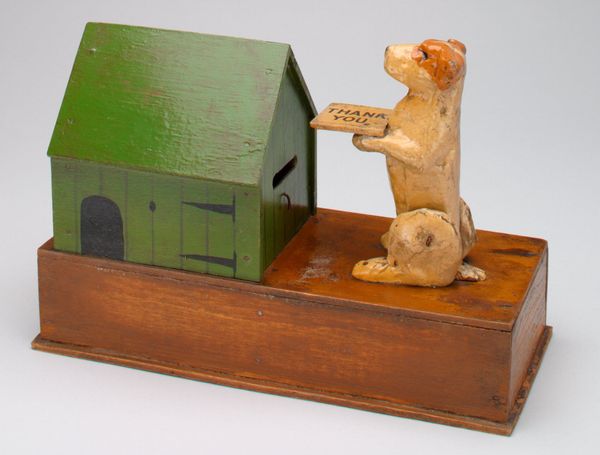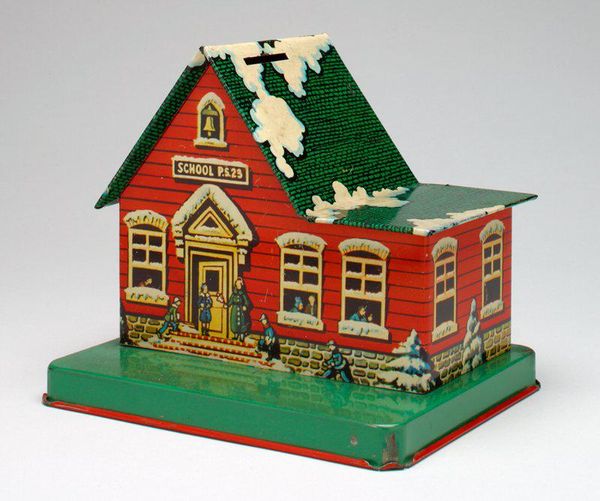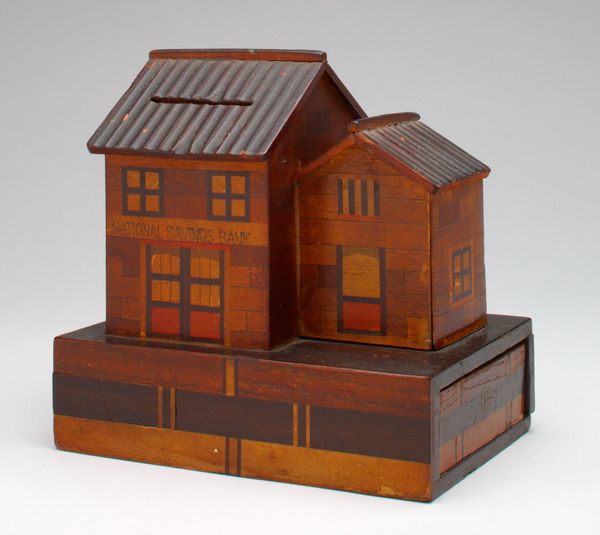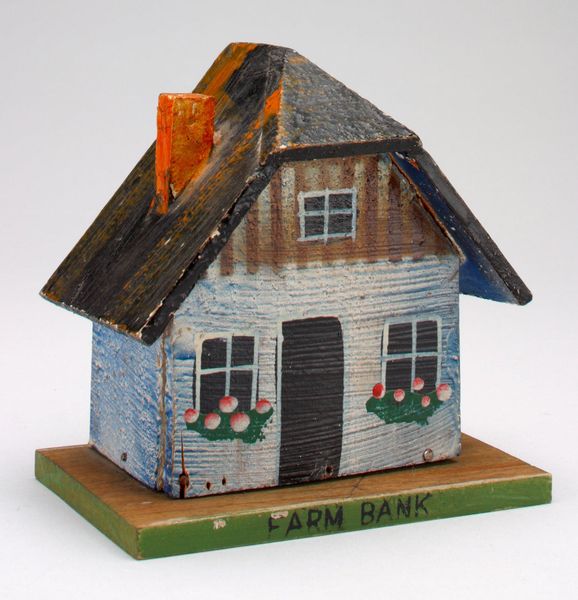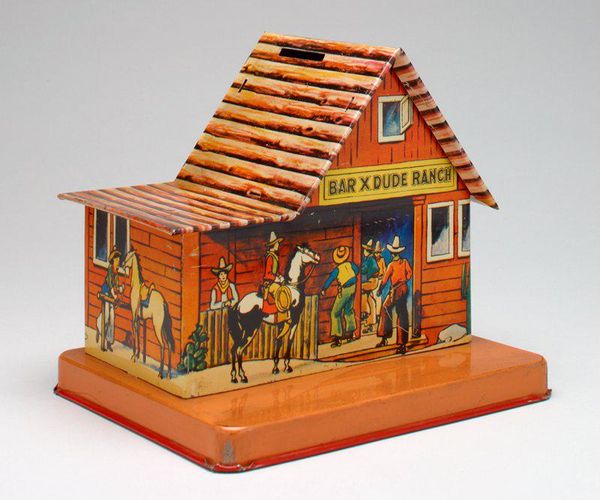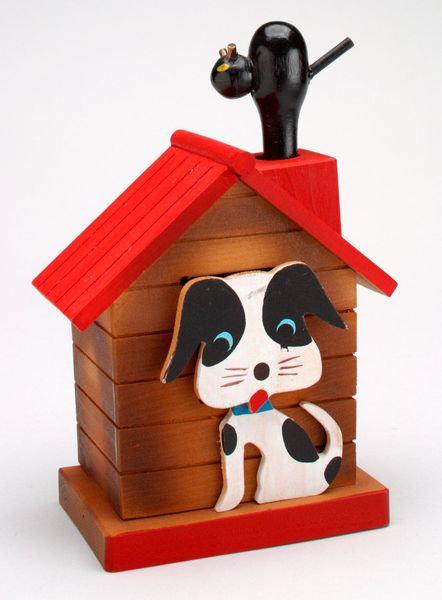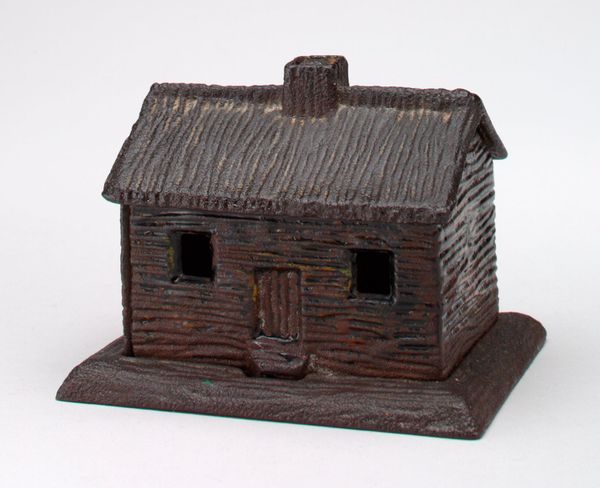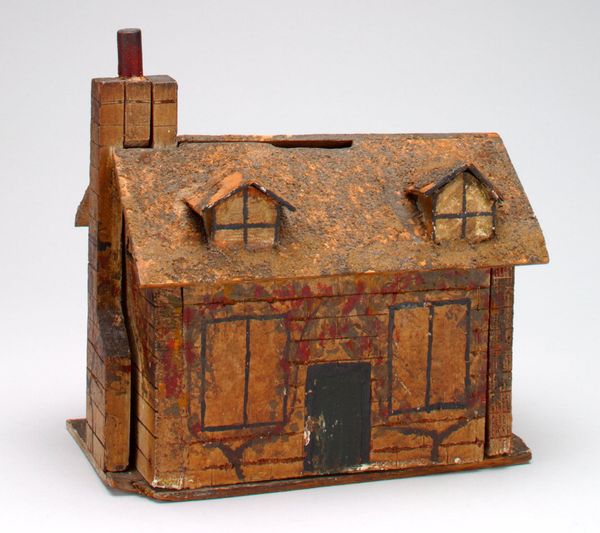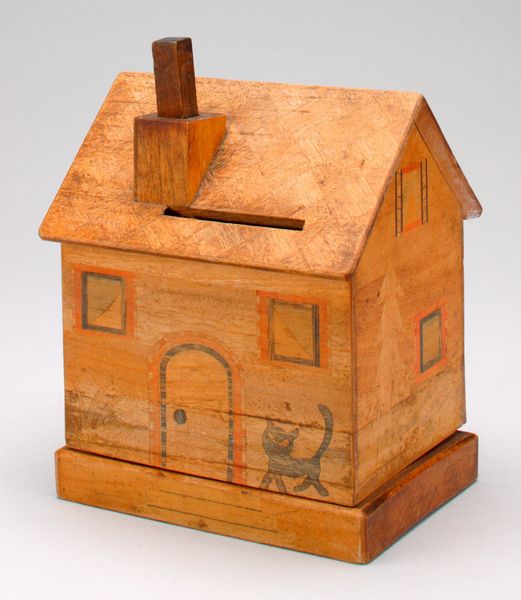
mixed-media, collage, paper, wood
#
mixed-media
#
collage
#
paper
#
traditional architecture
#
folk-art
#
geometric
#
naïve-art
#
united-states
#
wood
#
decorative-art
#
historical building
Dimensions: 6 1/2 x 4 1/16 x 9 1/2 in. (16.51 x 10.32 x 24.13 cm)
Copyright: No Known Copyright
Curator: Here we have "-Kick Inn-" mechanical bank, circa the 1920s, by Melville E. Stoltz. Made from a variety of materials including wood, paper, and mixed media techniques, it represents an intriguing piece of decorative and folk art from the United States. Editor: It looks like a child's toy, yet with a very serious face—both the house and the horse! The colors are muted, and it appears quite aged. I am curious to discover its narrative. Curator: Indeed. Mechanical banks were quite popular at the turn of the century. These objects weren’t simply for storing coins, they also encouraged thrift, even patriotism. What story can this unusual design be trying to convey? Editor: Absolutely! It's interesting how the imagery uses the naive style. It features geometric designs along with this unusual structure that looks to be an interpretation of traditional architecture, doesn't it? Curator: Precisely! I believe it is important to examine the societal context to understand how we conceptualized our hopes for the future. As such, this artwork reflects that time, displaying an architectural fascination intertwined with mechanical ingenuity and even social value in saving money. It's like having the machine be a role model, shaping moral development. Editor: Given the economic challenges of that time, seeing frugality presented through a child’s toy offers an interesting commentary. Does the act of kicking a coin "into" a building represent an accessible kind of civic contribution, however tiny? How does this interplay with capitalism, and accessibility when some could barely afford coins? Curator: That's a critical lens to use for analysis. Who did these objects truly serve, and what ideology did they reinforce? Focusing on consumerism alongside economic disparity brings light to overlooked aspects, which is important. Editor: Looking at this again, I notice the distressing texture on the house, almost dilapidated despite the playful element. Is that a reminder of what could be lost? Considering these issues makes a huge impact to our experience. I will be contemplating all of this for a while. Curator: I fully concur. "-Kick Inn-" really takes us on a historical as well as social journey. It displays American aspiration and raises questions regarding accessibility. This truly enhances and encourages deeper critical reflections for all who visit today.
Comments
No comments
Be the first to comment and join the conversation on the ultimate creative platform.
